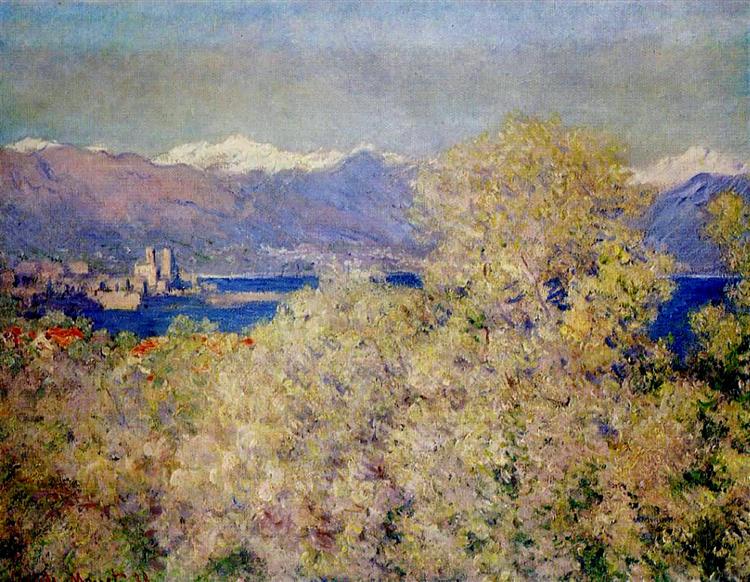Tanım
Claude Monet's painting "Antibes - View of the Gardens of Salis" painted in 1888 is a representative work of the Impressionist style that seeks to capture the ephemeral moment of visual perception. In this composition, Monet gives us a glimpse of the garden found on the Mediterranean coast of Antibes, a place that became a haven for many artists and intellectuals in the late 19th century. Monet's focus on nature and his desire to capture the changing light of the landscape resonates in every stroke of this work.
The painting’s composition is dominated by a dynamic arrangement of elements. In the foreground, a field of vibrant flowers appears to dance to the rhythm of a gentle breeze. Colours, from golden yellows to violets and blues, intertwine to create a sense of depth and movement. This signature technique of Monet’s, which advocates the rapid and loose application of paint, evokes the dynamism of a constantly changing natural environment. The viewer’s gaze is guided from the flowery foreground to the background, where the white architecture of the residences and Mediterranean vegetation are drawn, creating a perspective effect that invites immersion.
The choice of colour palette in “Antibes – View of the Gardens of Salis” is particularly noteworthy. Monet uses a wide range of tones that subtly balance each other. The warm colours of the foreground contrast with the cooler hues of the background, suggesting a play of light and shadow that brings the landscape to life. This chromatic interplay is indicative of his intention to capture not only the visual aesthetics, but also the sensorial atmosphere of the place. The sky, in turn, is filled with light and clouds, from crisp whites to soft greys, a reflection of the Mediterranean climate and the variations typical of a sunny day.
Although the work does not seem to include any prominent characters in the narrative, figures can be identified in the distance that suggest the presence of an inhabited environment. These small details suggest an everyday life, a background in which nature and humans coexist in harmony. The inclusion of barely perceptible people adds a sense of scale, making the garden appear not only as a space for contemplation, but also as a place where one lives and enjoys the beauty of nature.
"Antibes - View of the Gardens of Salis" also highlights the period in which Monet traveled to the southern coast of France, where he experienced a liberation of the impressionist technique in a region where light and color have unique characteristics. This work can be seen as part of a larger body of works that Monet produced in this region, like "The Beach at Trouville" or "The Garden at Argenteuil", where the natural environment becomes the absolute protagonist of the work.
The spontaneity and brilliance of this painting are the palpable expression of the innovation that Monet brought to art. His approach to colour, light and nature not only highlight his mastery, but also laid the groundwork for modern art, influencing generations to come. Thus, "Antibes - View of the Gardens of Salis" is not only a testament to the beauty of its depicted subject, but also a milestone in the development of an artistic language that continues to resonate today.
KUADROS ©, a famous painting on your wall.
Hand-made oil painting reproductions, with the quality of professional artists and the distinctive seal of KUADROS ©.
Painting reproduction service with satisfaction guarantee. If you are not completely satisfied with the replica of your painting, we will refund 100% of your money.

